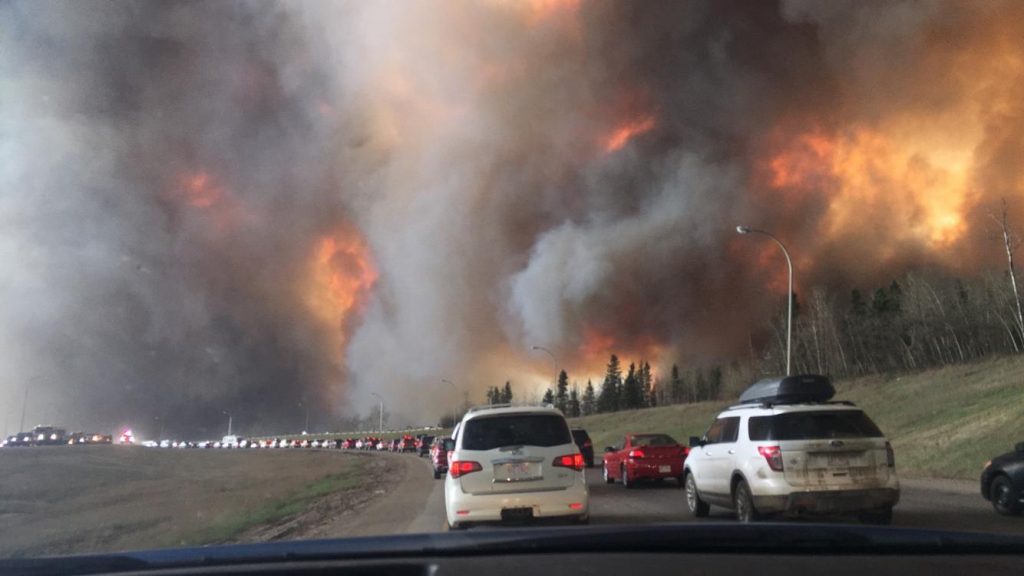Wildfires have always been a concern in Canada and the US, but the past decade has seen some of the largest and most destructive wildfires in history. While climate change has played a key role in the rising number and intensity of wildfires, the increasing urban growth in wildfire-prone areas has put more and more people directly in harm’s way. This is known as the Wildland-Urban Interface (WUI), in which forest and wildland fuels intersect with human development. As more and more people choose to live in the WUI, not only are wildfires more likely to occur, but fire management becomes more challenging as well.
In early May of 2016, a devastating wildfire swept through the city of Fort McMurray, destroying over 2400 buildings and forcing the evacuation of over 80,000 people. The fire spread across and burned over 5890km² of land, comparable to the size of Prince Edward Island (Statistics Canada, 2017). It later became known as the costliest natural disaster in Canadian history, having caused losses of an estimated $3.7 billion and a significant decrease in GDP (Statistics Canada, 2017).

Evacuation underway in Fort McMurray (Wikipedia Commons)
Due to its proximity to the Athabasca Oil Sands, the city of Fort McMurray has become a major petroleum hub, drawing in thousands of laborers to work in the booming oil industry. The population of the area has increased considerably from 38,667 people in 2001 to 66,573 in 2016 (Statistics Canada, 2016), with thousands of new homes being built in the WUI. This is especially concerning given that Fort McMurray is completely surrounded by boreal forest, which is highly susceptible to fire (MNP LLC, 2017). A Google Earth Engine timelapse shows the extent of the rapid urban growth over the past three decades and the increase of the WUI.
Although there were no casualties in the fire, thousands of buildings were destroyed, with a majority of them being houses. This study aims to identify which homes burned in relation to the WUI and identify any trends related to dwelling density and median household income. In addition, I would like to look at how the wildfire progressed through the city and determine if FireSmart practices may have played a role in fire containment or home protection.